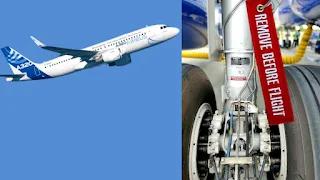Aircraft Landing Gear
Safety System
Landing gear safety
systems are critical to ensuring the reliable operation of the landing gear. In
order to prevent the landing gear from retracting or folding while in use, there
are numerous different landing gear safety measures. Other gadgets, for
instance, inform the pilot of the location of each individual landing gear.
There are four main safety features for the landing gear system.
There are many safety
features for the landing gear. The ones that stop the equipment from retracting
or collapsing while it is on the ground are the most prevalent. An additional
safety measure is gear indicators. They are utilised to inform the pilot at any
moment of the location and status of each individual landing gear.
They are the nose wheel centering, ground locks, landing gear position indicators, and landing gear safety switch. This article will describe each of them, their functions, and their functions.
Landing Gear Safety Switch
Most aircraft have a
switch called a landing gear squat switch (which senses Weight on Wheel also
called WOW Switch) that can be set to open or close based on whether the main
landing gear strut is extended or compressed. Many of the circuits that run the
system are wired with the squat switch. One of these circuits stops the gear
from retracting when the plane is on the ground. There are various methods for
achieving this locking. There are various strategies for implementing this
lock-out. One such technique used on many aircraft is a solenoid that stretches
a shaft to physically disable the gear position selector. The squat safety
switch opens when the landing gear is compressed, and the centre shaft of the
solenoid thrusts a hardened lock-pin through the handle of the landing gear to
prevent it from being shifted to the up position.
The landing gear strut
expands during takeoff. When the safety switch closes, the safety circuit can
now conduct current. The lock-pin is activated and retracted from the selector
handle by the solenoid. This enables the raising of the equipment.
High-performance aircraft
frequently employ proximity sensors for gear position safety switches.
Depending on the closeness of a conductive target to the switch, an
electromagnetic sensor sends back a varied voltage to a gear logic unit. There
is no physical interaction. The metallic target is close to the sensor's
inductor while the gear is in its intended position, which lowers the return
voltage. In the landing gear environment, where switches with moving parts
might get polluted with debris and moisture from runways and taxiways, this
form of sensing is very helpful. It is up to the technician to make sure that
sensor targets are placed at the proper vantage point relative to the sensor.
Often, go/no-go gauges are used to determine the distance.
Ground Locks
In order to further
ensure that the landing gear will be locked in place when the aircraft is on
the ground, ground locks are utilised on the landing gear. An external
component known as a ground lock is inserted into the retraction mechanism to
stop it from moving. To prevent a gear from collapsing, ground locks can be as
simple as a pin in the holes of the gear's parts. A different kind of ground
lock latches onto the gear cylinder's exposed piston and prevents it from
retracting. Red streamers are used to identify every ground lock, making it
simple to remove them prior to takeoff. The flight crew typically carries
ground locks onboard the aeroplane and instals them.
Landing Gear Position Indicators
Landing gear position
indicators are used, as their name implies, to alert the pilot about the status
of the landing gear. Although there are different configurations for gear
position indicators, they are often found on the instrument panel next to the
gear selector handle. The most typical indication that the landing gear is
locked and down is a lit green light. The plane is prepared to land when there
are three green lights. The gear is up and locked if all of the lights are off.
When the landing gear is
not in the same position as the selector, some manufacturers announce a gear
conflict. Many aircraft track the position of the gear doors in addition to the
gear itself. For a thorough explanation of the landing gear indication system,
refer to the maintenance and operating manuals provided by the aircraft
manufacturer.
Nose Wheel Centering
There needs to be a means to position the nose gear before retraction because the majority of aircraft have steerable nose wheel gears for taxiing. The shock strut structure's centering cams are used for this purpose. When the gear is fully extended, an upper cam engages with a lower cam recess, aligning the gear for retraction. After landing, the shock strut is compressed and the centre cams split as weight is distributed back to the wheels. As a result, the upper strut cylinder and lower shock strut rotate. The aeroplane is steered by controlling this rotation. On the strut of smaller aircraft, an external roller or guide pin may occasionally be present. The roller guide pin engages a track mounted to the wheel well structure as the strut retracts into the wheel. The nose wheel is straightened when it enters the wheel well thanks to the guidance provided by this track for the roller or pin.
Also Read
Full Authority Digital Engine Control (FADEC) System Description & Operation










0 Comments